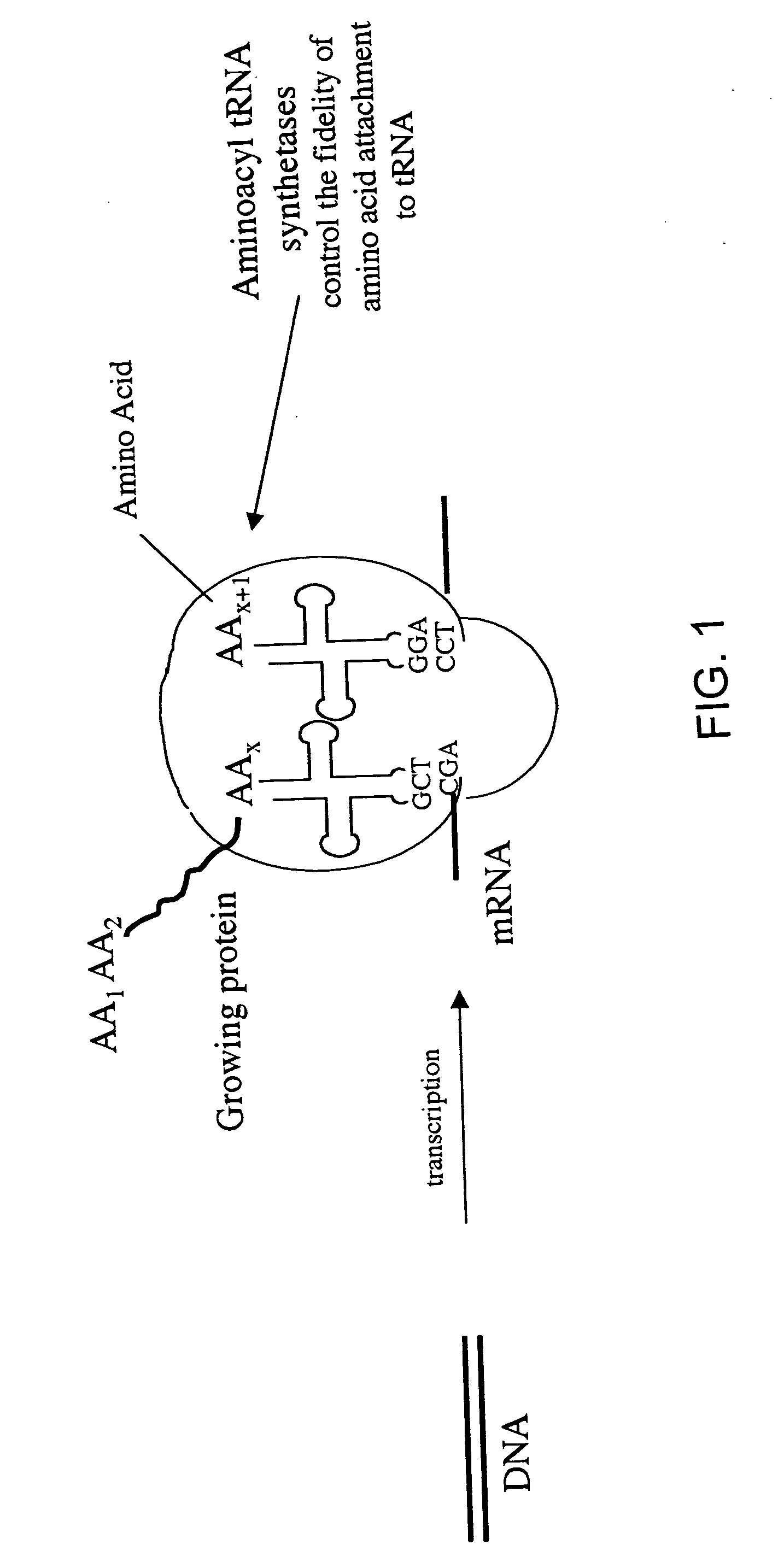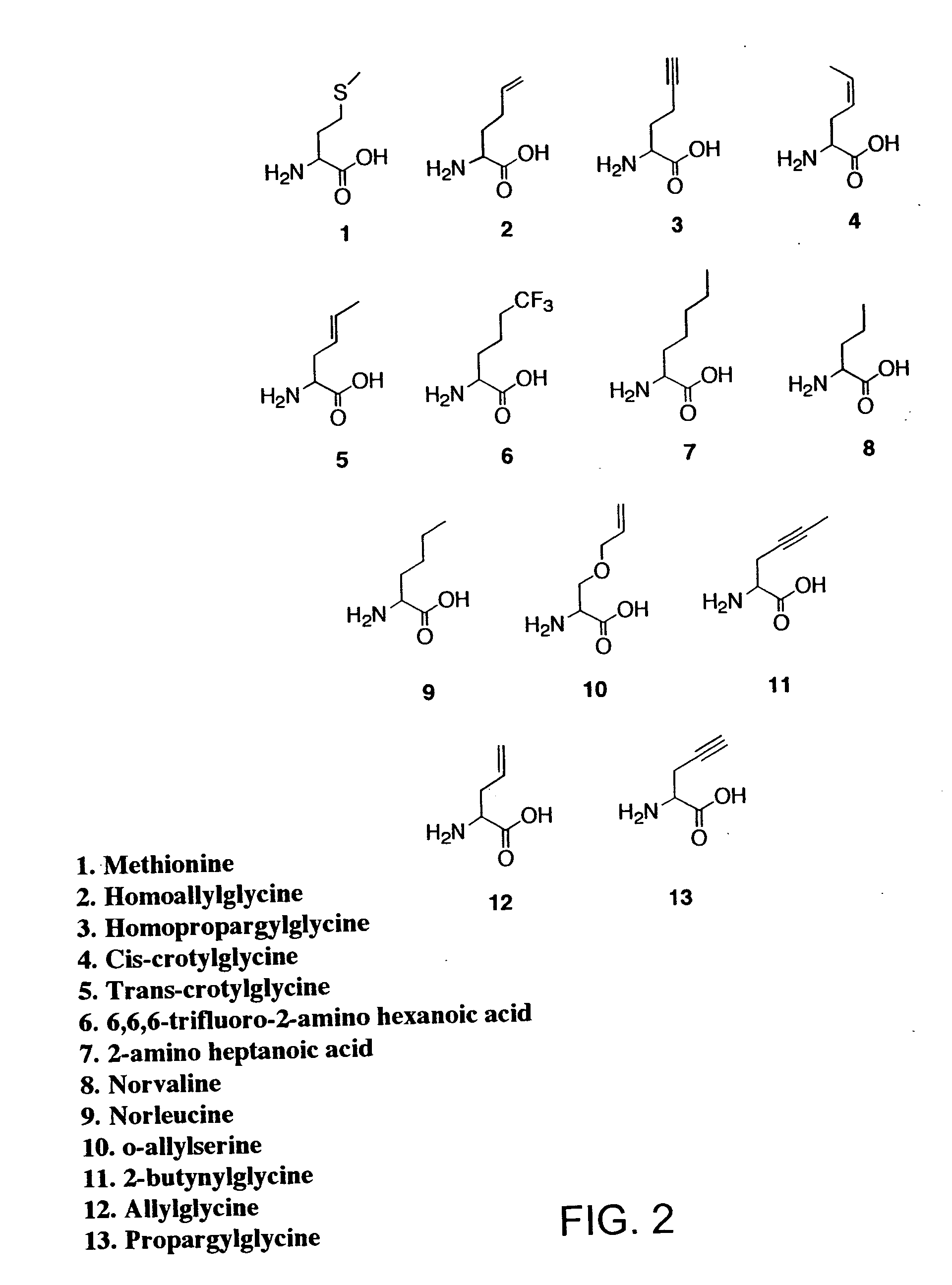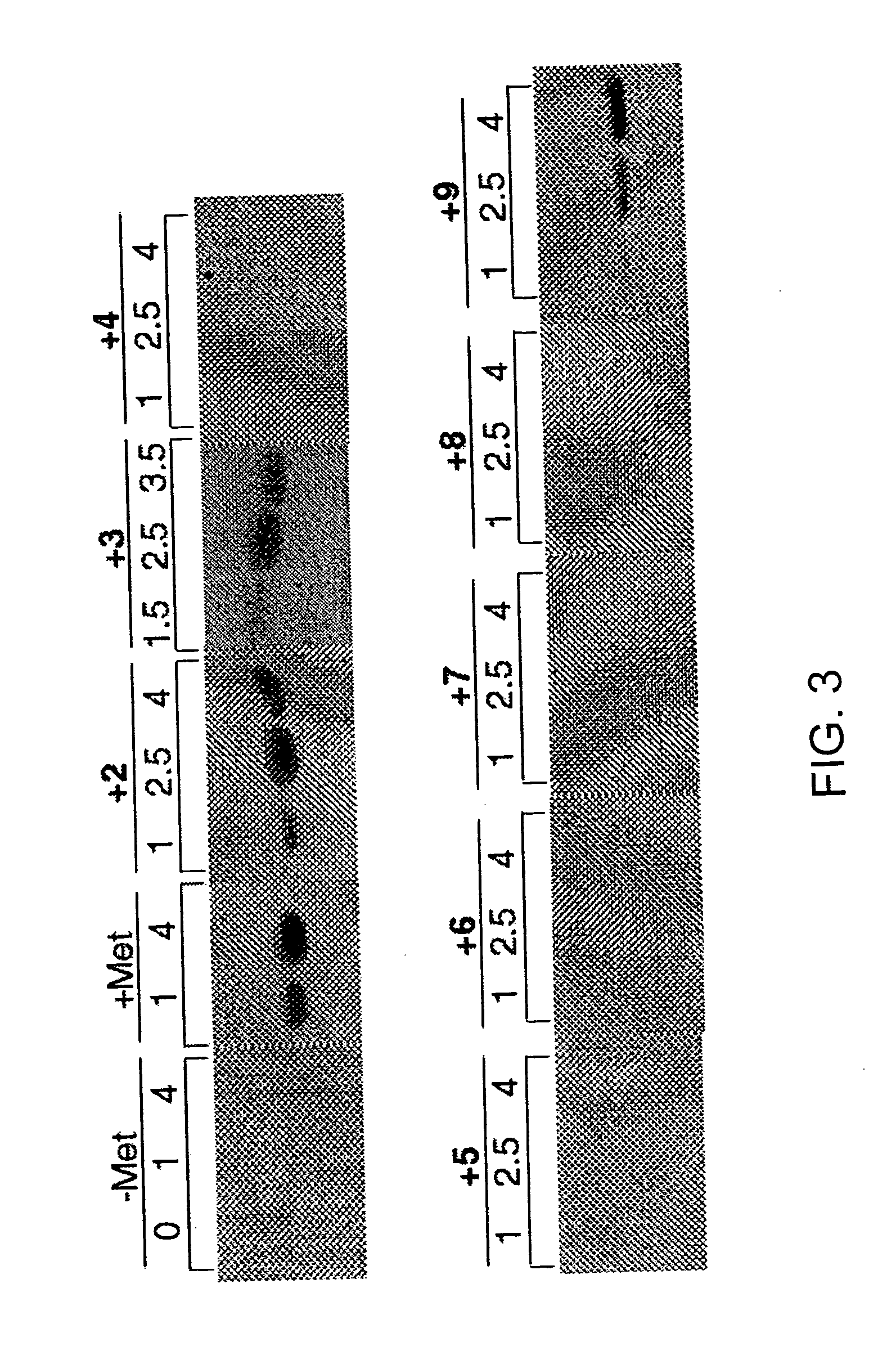Overexpression of aminoacyl-tRNA synthetases for efficient production of engineered proteins containing amino acid analogues
a technology of aminoacyltrna synthetase and amino acid analogue, which is applied in the direction of ligases, applications, enzymology, etc., can solve the problems of not being able to produce protein materials of longer amino acid sequences, no control level provided by the synthetase, etc., and achieves the effect of increasing the yield of proteins
- Summary
- Abstract
- Description
- Claims
- Application Information
AI Technical Summary
Benefits of technology
Problems solved by technology
Method used
Image
Examples
example ii
[0181] This example demonstrates the expansion of the scope of methionine analogues for incorporation into proteins in vivo by altering the methionyl-tRNA synthetase activity of a bacterial expression host.
[0182] The relative rates of activation of methionine and methionine analogues 2-13 (FIG. 2) by MetRS were characterized in vitro by the ATP-PP.sub.i exchange assay. The fully active, truncated form of MetRS was purified from overnight cultures of JM101 cells carrying the plasmid pGG3. The enzyme was purified by size exclusion chromotography as previously described (P. Mellot, Y. Mechulam, D. LeCorre, S. Blanquet, G. Fayat, J. Mol. Biol. 1989, 208, 429-443). Activation of methionine analogues by MetRS was assayed at 25.degree. C. via the amino acid-dependent ATP-PP.sub.i exchange reaction, also as described in Example I (G. Ghosh, H. Pelka, L. H. Schulman, Biochemistry 1990, 29, 2220-2225). Assays to determine if the methionine analogues 2-13 were recognized by MetRS were conducte...
example iii
[0206] This example demonstrates that activation of methionine analogues in vitro correlates well with the ability of these analogues to support protein synthesis in vivo, substantiating the critical role of aminoacyl-tRNA synthetase in controlling the incorporation of amino acid analogues into proteins.
[0207] Reagents
[0208] Each of the analogues 2-7 and 11 (FIG. 2) was prepared by alkylation of diethyl acetamidomalonate with the appropriate tosylate followed by decarboxylation and deprotection of the amine function (as described in Example I). Methionine and analogues 8, 9, 12 and 13 were obtained from Sigma (St. Louis, Mo). Radiolabeled sodium pyrophosphate was purchased from NEN Life Science Products, Inc., and isopropyl-.beta.-D-thiogalactopyranoside was obtained from Calbiochem. The RGS-His antibody and anti-mouse IgG horseradish peroxidase conjugate used for Western blotting procedures were obtained from Qiagen and Amersham Life Sciences, respectively. All other reagents used ...
PUM
 Login to View More
Login to View More Abstract
Description
Claims
Application Information
 Login to View More
Login to View More - R&D
- Intellectual Property
- Life Sciences
- Materials
- Tech Scout
- Unparalleled Data Quality
- Higher Quality Content
- 60% Fewer Hallucinations
Browse by: Latest US Patents, China's latest patents, Technical Efficacy Thesaurus, Application Domain, Technology Topic, Popular Technical Reports.
© 2025 PatSnap. All rights reserved.Legal|Privacy policy|Modern Slavery Act Transparency Statement|Sitemap|About US| Contact US: help@patsnap.com



